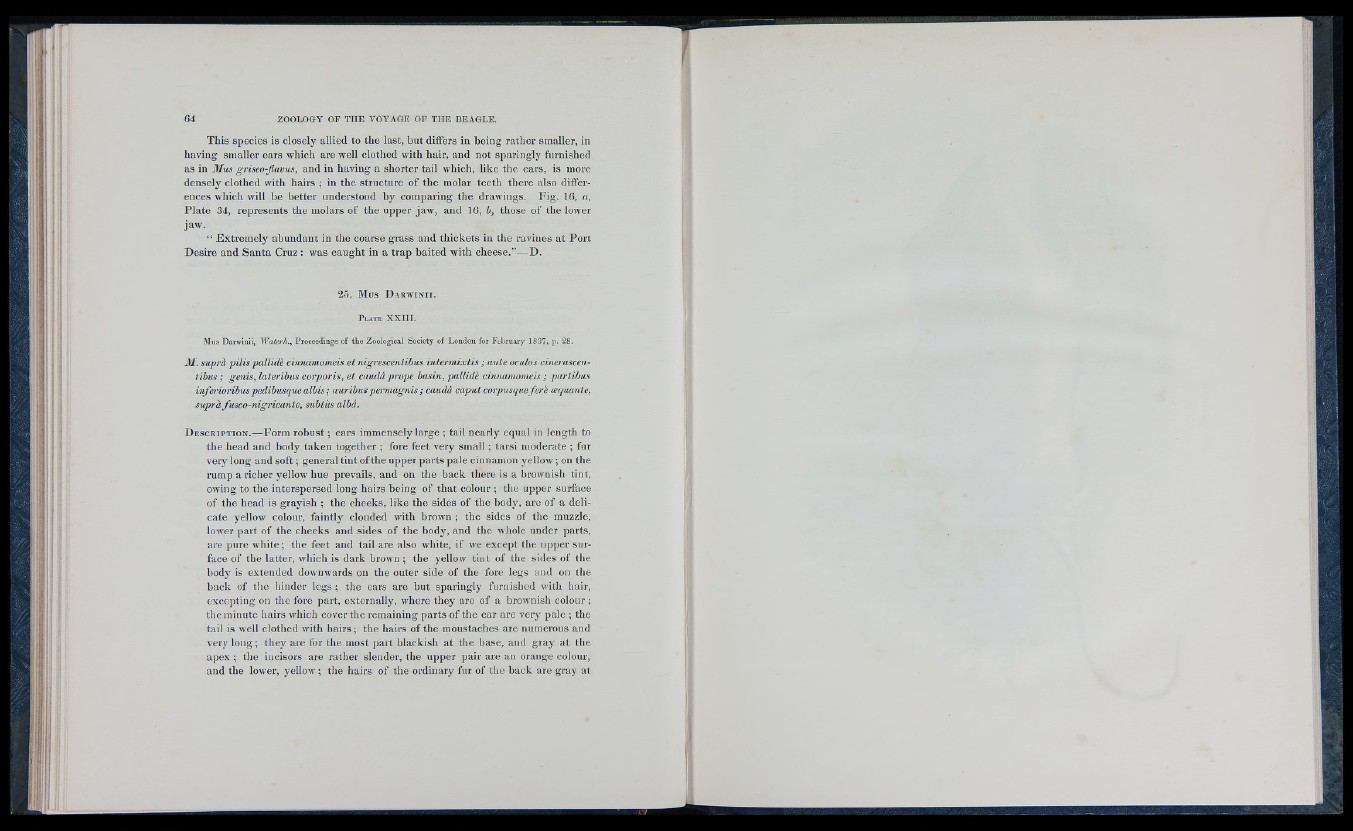
Tliis species is closely allied to the last, but differs in being rather smaller, in
having smaller ears which are well clothed with hair, and not sparingly furnished
as in 3Tus griseo-flavus, and in having a shorter tail which, like the ears, is more
densely clothed with hairs ; in the structure of the molar teeth there also differences
which will be better understood by comparing the drawings. Fig. 16, a,
Plate 34, represents the molars of the upper jaw, and 16, h, those of the lower
jaw.
“ Extremely abundant in the coarse grass and thickets in the ravines at Port
Desire and Santa Cruz : was caught in a trap baited with cheese.”— D.
2 5 . Mus D a r w i n i i .
P late X X III.
Muâ Darwinii, Waterh., Proceedings of the Zoological Society of London for February 1837, p- 28.
31. suprà pilis pallidè cinnamomeis et nigrescentibus intermixtis ; ante oculos cinerascen-
tibus ; genis, lateribus corporis, et caudâ prope basin, pallidè cinnamomeis ; partibus
inferioribus pedibusque albis ; auribus permagnis ; caudâ caput corpusque ferè cequante,
sup?-à fusco-nigricante, subtus albâ.
D e s c r i p t i o n .—^Form robust ; ears immensely large ; tail nearly equal in length to
the head and body taken together ; fore feet very small ; tarsi moderate ; fur
very long and soft ; general tint of the upper parts pale cinnamon yellow; on the
rump a richer yellow hue prevails, and on the back there is a brownish tint,
owing to the interspersed long hairs being of that colour ; the upper surface
of the head is grayish ; the cheeks, like the sides of the body, are of a delicate
yellow colour, faintly clouded with brown ; the sides of the muzzle,
lower part of the cheeks and sides of the body, and the whole under parts,
are pure white ; the feet and tail are also white, if we except tiie upper surface
of the latter, which is dark brown ; the yellow tint of the sides of the
body is extended downwards on the outer side of the fore legs and on the
back of tlie hinder legs ; the ears are but sparingly furnished with hair,
excepting on the fore part, externally, where they are of a brownish colour ;
the minute hairs which cover the remaining parts of the ear are very pale ; the
tail is well clothed with hairs ; the hairs of the moustaches are numerous and
very long; they are for the most part blackish at the base, and gray at the
apex ; the incisors are rather slender, the upper pair are an orange colour,
and the lower, yellow ; the hairs of the ordinary fur of the back are gray at
F.\ I